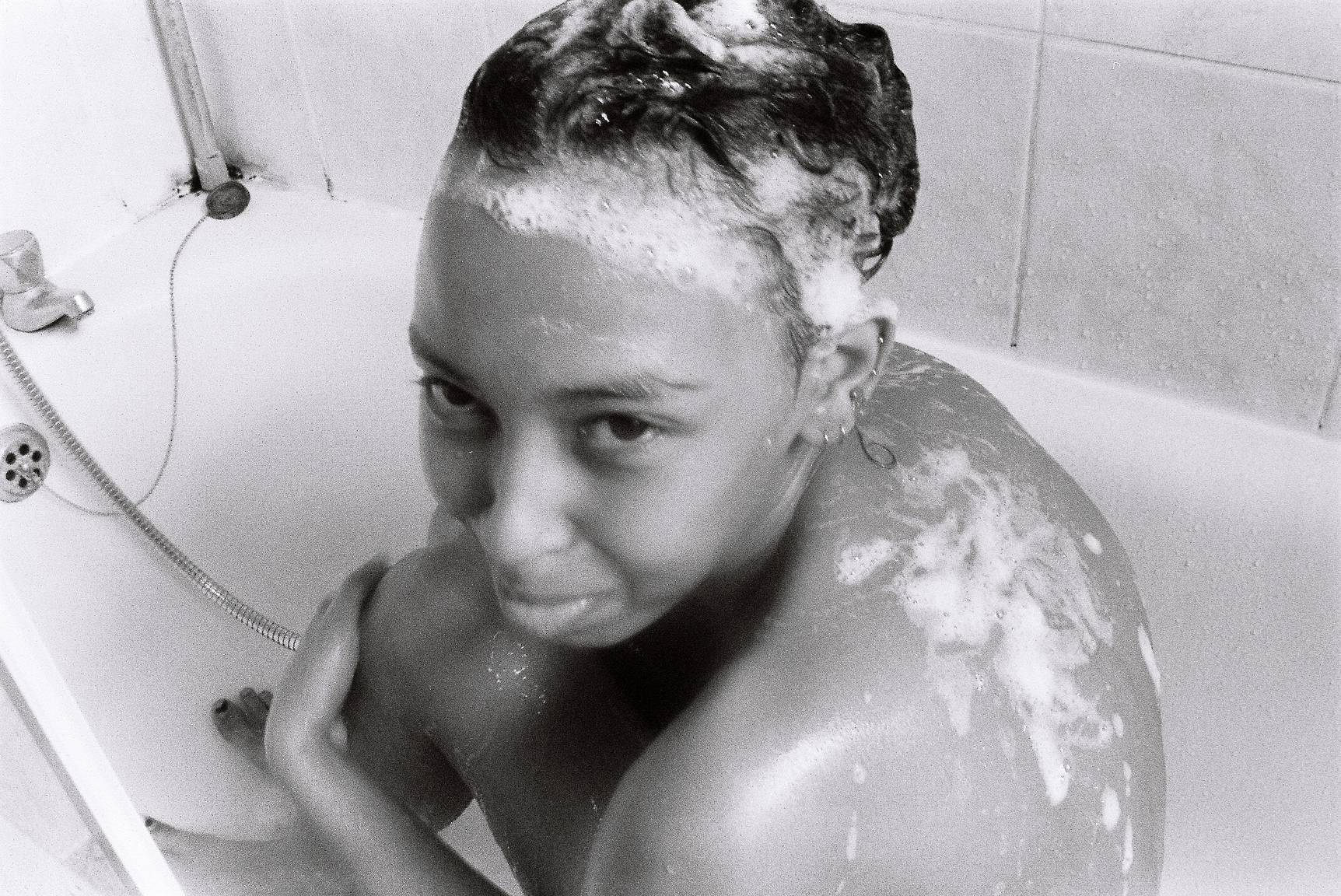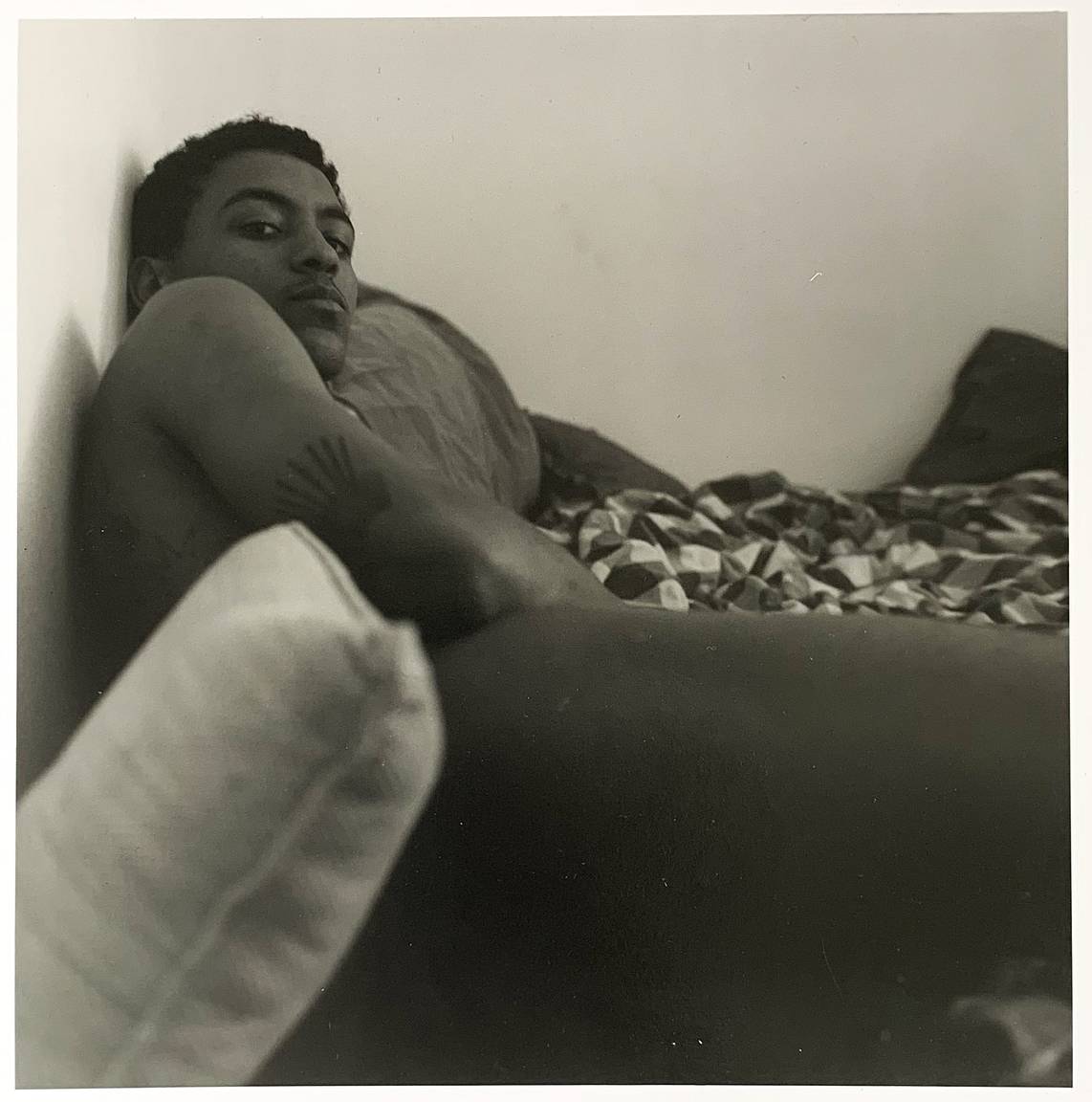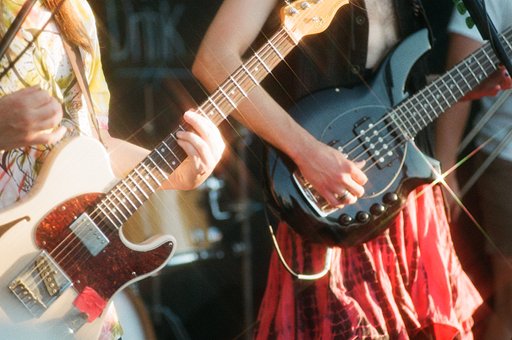Skye Evelyn Matthew on the Tangible and Slow Process of Film Photography
4 Share TweetTangibility and vulnerability run tenderly through photographer Skye Evelyn Matthew’s body of work. Big on hand printing their images — even expressing the personal aspect the process brings, "These prints are born by my hand, innately charged in whichever mental space I’d been wavering in that day or hour, whether that be a trance of gratitude, sadness, yearning, impatience, anger, or frustration. It's just part of the process," they turn to film photography as a means to experience the world around them.
After graduating with a degree in photography from Middlesex University and immersing themselves in the arts and culture sector in the UK, with their work being featured in editorials such as i-D Magazine, Skye took that breadth of experience and pivoted to other forms of art and expression. “I felt as though I was mourning in a transient space – driven to preserve where I was, the people I knew as I knew them at the time.” Stepping away from their work and image-making practice made Skye turn to other ways of telling stories through photography, such as more anthropological studies.
We spoke with Skye about their journey in film photography and why they embrace the tactile experience of the analogue medium.
Hi Skye! Welcome to Lomography Magazine! Can you introduce yourself and tell us what you do?
My name is Skye Evelyn Matthew (at times Milo Matthew) and I am a 22-year-old photographer based in London. I primarily work with analogue mediums and I would describe my images as raw and insightful, quite intimate, and vulnerable. Photography acknowledges my sensitivity, allowing me to reflect on my nature, or that of another, through documentation of our interactions. A camera is a tool through which I can introduce myself to new experiences — in a way, my growth is reflective of the nurture of my practice. Photography has proved to be the medium to which I return to.
When were you first introduced to film photography? Can you share with us your history with the medium?
Working with film is a very tactile and intimate process. I work with natural lighting when I shoot. I don’t like to manipulate my negatives much in the development or printing processes. I listen to the negative, and you get what you get. Film has been more forgiving as a medium, I find, and has a sense of nostalgia — working with tangible and slow, in a way fragile, processes adds sentimentality to my practice.
In the final year of my undergrad, I grew very fond of 120 square format film, following an adoration of Robert Mapplethorpe’s portraits. Equipped with my Bronica SQ-A, and fully won over by the waist-level viewfinder, I exclusively printed 120 6x6 for around a year, although now I much prefer printing 35 mm. Although 6x6 retains much more detail, I enjoy working from the smaller negative.
When did you first learn about Lomography?
I often shoot on Lomography color film stocks whenever I dabble in color. I recall working at Aperture Printing in Tottenham Court Road and always recommending the 100 and 400 trio color packs to beginners, I always found them to produce marvelous colors.
I have great memories of shooting Lomography Redscale with my old flatmate on New Year's Eve, or a French girl at The Hill Garden and Pergola, three years before we reconnected as friends at Makan on Portobello Road. I remember looking over the black and white Potsdam and Lady Grey stock when looking for new film to try out...Lomography has always been there.
I've been wanting to try Babylon Kino B&W 35 mm ISO 13 this year as I ease back into shooting regularly.
A large portion of your film photography work is shot on black and white film. When and why did you start to gravitate towards monochrome images for your personal and professional photographic projects?
I started to gravitate towards ‘exclusively’ monochromatic imagery, in or around 2021, I believe. I was falling for the likes of Roy DeCarava and Patti Smith, enthralled by Yves Trémorin’s Monica photobook that I picked up in Brussels, and had a sort of philosophy that any image that didn’t work in color, would ultimately work in black and white. Although I had always shot both color and black and white rolls in the past.
I don't shoot color that often now because I can't print from it, my darkroom facility doesn’t allow for this, and when I've tried color printing in the past I grow frustrated, trying to align the paper perfectly in the easel...in complete darkness. Oh, how I admire color darkroom printers! They have a lot of patience.
I do see myself revisiting color very soon. I have felt myself gravitating towards it again, catching myself thinking “I would have much preferred this picture be in color, the color of that [insert worthwhile object and unmissable color opportunity] would have been gorgeous.” I’m feeling brighter these days too, and this invites color.
Elements of authenticity and tenderness are present throughout the film photographs that make up your 2022 exhibition project, DEL. What encouraged you to take this project on?
DEL primarily conveys imagery that has defined roughly 7 months of my life, and simultaneously my practice, from late 2021 into 2022. Its subject matter accompanied the pursuit of a more tactile and immersive photographic process. This project taught me how to print, at Middlesex University and later The Gate Darkroom, where I still produce my works.
My instinct to capture moments of intimacy and vulnerability gradually turned my gaze toward the nature of the nude. Through my documentation of interactions with others I sought to reflect on and confront some struggles I had met continuously within myself, regarding intimacy and nudity, where I would capture these images, exchanges, while being nude myself. I felt that it would make sense for me to be nude too, as ultimately this project was meant to confront something within me, and to eliminate any underlying power imbalances or space for unintended exploitation. The nude is not meant to be an element which overrides the entire image, instead it is intended to be a subtle factor, and feel like the rest of my work. I allowed my subjects to relax, and have their bodies fall naturally into comfortable arrangements while they spoke or listened. Or when they didn't, I enthusiastically showed them an image of an Egon Schiele piece to encourage a certain posture: round, curled, draped. This project brought out many cherished moments between myself and my subjects, some, my closest friends, some, people I lived with at the time or hadn’t seen in a while, and some, people I barely knew.
To me, this project is coated in the distress and endurance of a difficult relationship...brief, as brief as this project, but harrowing, where I sought refuge in the darkroom and my subjects. Towards the latter half of this project, I visited Francis Bacon’s Man and Beast at the RA. Here a mental motif of wrestling emerged and was carried throughout the project and into the end of the year. Eadweard Muybridge’s ‘Wrestling (1881)’ is simultaneously, Bacon’s ‘Two Figures (1953).’ Then again, in Florence that August, as ‘The Wrestlers’, the first century Roman sculpture displayed at the Uffizi. I was wrestling myself in my inner turmoil, and I suffocated under the weight of that time. Through this process, I have personified it, given it a face, a ‘voice’, and a place in the tangible world, though it does not haunt me.
Another project you took on before DEL was entitled, Most Hated and took place in Vietnam back in late 2019 to early 2020. Now that you’ll be revisiting Saigon since the inception of that project, can you share more about what you’re looking forward to for this trip?
I think my approach this time will be drastically different. I used to run around with a compact camera with the flash on, whereas now I take more care. I seek more intimacy, working closer with individuals and developing a wider body of work with them. Exploring aspects of their lives and our shared times, rather than trying to forecast a community from a distance as I can be shy when it comes to photographing strangers, so really that approach does not satisfy me anymore and I have learned that this is okay. I’ve learned to work with myself rather than against. In this way, I could form a glimpse into the core and culture of a wider community, through the depiction of an individual and their surroundings.
In a more technical sense, I have my own style now. I know what I'm looking for when I shoot, and I know how to connect to people more sincerely. My equipment responds to me better, and I can print now! I hope to be partnering with a darkroom there so will see how that goes.
You’ve spent much time in and out of darkrooms: developing, scanning, and printing your film photographs. What is it about going through this process that is important to you, your practice, and your artistic sensibilities?
I haven't been shooting much, but I have been printing a good amount. Giving my images some tangibility. I work from The Gate Darkroom, where we have a large CD and cassette collection: Billie Holiday’s “Lover Man”, The Beatles’ “Rubber Soul”, and Prince’s “Purple Rain” often accompany my darkroom sessions.
The darkroom can be a lonely or nourishing place — a space I prance around, singing and dancing in the comfort of my own company and solitude, in darkness. It’s been a place to cry and plead. Hand printing brings many intervals — process for 3 minutes. Stop for 1. Fix for 5 — in that 5 you turn inwards. These prints are born by my hand, innately charged in whichever mental space I’d been wavering in that day or hour, whether that be a trance of gratitude, sadness, yearning, impatience, anger, or frustration. It's just part of the process.
An imprint of something I saw at one point, traveled through my consciousness, through my camera’s lens, through a chemical bath, through a dryer, through a negative holder, through an enlarger through to another lens, shone onto paper, soaked in another chemical bath, residue cleansed off through a water bath, air dried and flattened in a heat press. And that's the final image. I like to bring it face to face by hand when I have the time and willpower.
How far into your film journey did you first start self-developing and scanning your films?
I first started processing and printing when I realized I'd made it to the final year of my bachelor's course without knowing any of these processes. I took myself to the photography department in the basement, frequented the technicians, and I was finally taught. I was in the Covid online university age sadly. And I hate scanning. I don't scan my own film. That's why most of my film is printed because I can do it myself and scan the print I need.
Given the digital age, why opt to print photographs, revisit contact sheets, and keep a log of it all?
I want my photos to end up in a box in my friends' wardrobes, under their beds, etc., and they can dig them up in 25 years when they recall a good age, a bad age, a past relationship, themselves and their partner when they were younger — this means a lot to me, it's tangible. Where even is the digital realm? Where is Instagram? How do you get there? Can you feel it? How can you be sure it's secure and won't disappear?
As a visual artist, what are the most important qualities to have?
I aim to be open, so to invite my subjects to be open with me. I bring myself forward to be met. I think this is very important to create an awareness that there is still a human behind the camera, both for the viewer and for the subject
Who are the artists whose works have been vital to your journey thus far?
Nan Goldin’s “The Ballad of Sexual Dependency” literally pried my eyes open to life within images. Diane Arbus and 6x6. Patti Smith’s “Just Kids” was a driving force and propelled me in my 2021 endeavors. Edith Arnaldi and her “Ricette Fotographice di 1937”, which I came across at an exhibition at Villa Bardini. Frida Khalo’s “Self-Portrait with Cropped Hair”. “Beatrice”, as a concept, in Hermann Hesse’s ‘Demian’. Vivian Meir in her solitude and makeshift darkroom bathroom. Billie Holiday’s “Solitude.”
What other aspects of analogue photography are you looking to try out next?
Sustainable and eco-friendly alternatives to chemical processing, and cyanotypes.
Thank you to Skye for sharing their film journey with us thus far! See more of their work on their website and Instagram.
written by macasaett on 2024-03-29 #people #interview #artist #march #womens-month















































No Comments